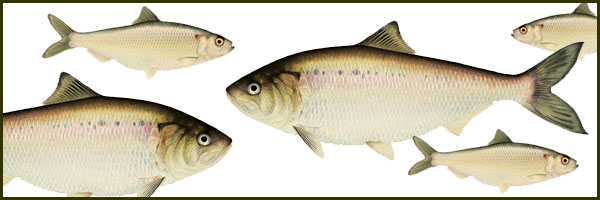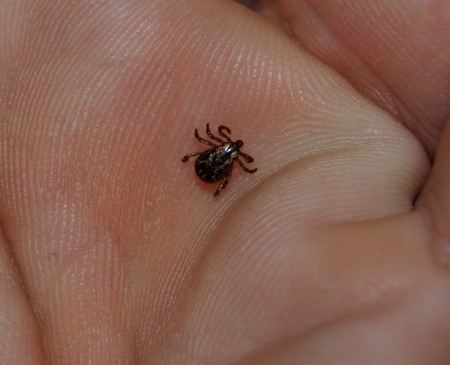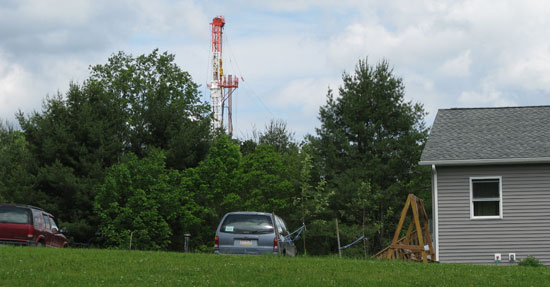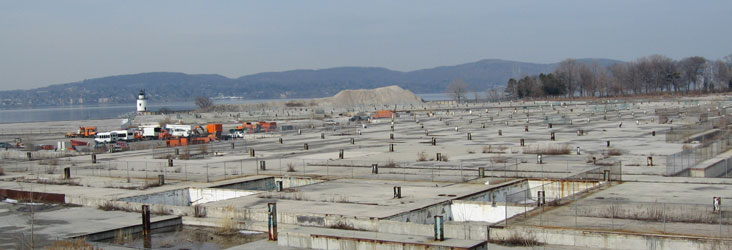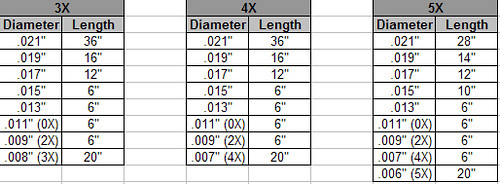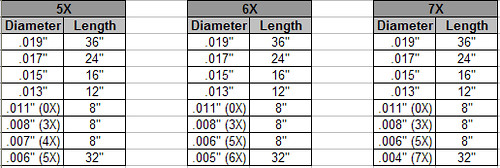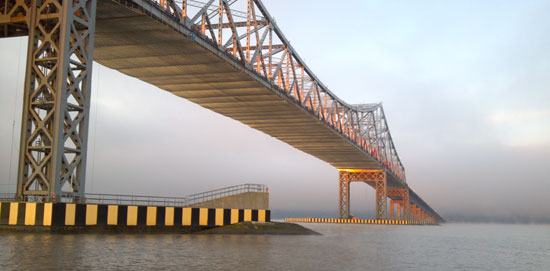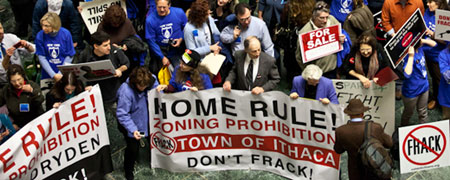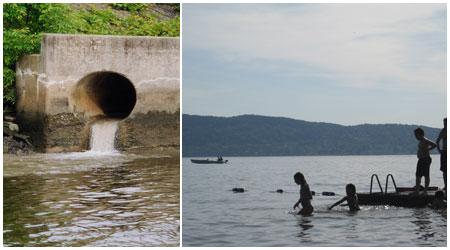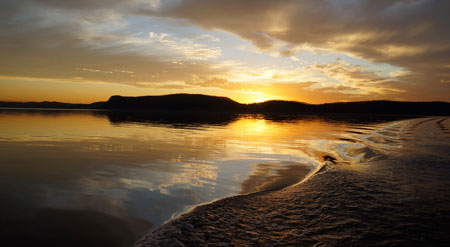Add your voice to a growing number of people, businesses and organizations who support the restoration of one of the world’s largest freshwater ecosystems.
Sign Now »
Saturday, May 19, 2012
Friday, May 18, 2012
Handling Black Bears in Urban and Suburban Areas
| Young black bears will climb trees if they feel threatened. |
Bears turn up in urban and suburban areas throughout New York State every year. During spring and early summer, young males set out on their own and sometimes travel into cities and towns where bird feed, garbage and pet food are available. When this happens, DEC's first response is to monitor the bear's movements, collaborate with local police and ensure the bear can find its own way safely out of town. Yet, when a bear seeks refuge in a tree and crowds form, the situation becomes more difficult. If a safe escape route exists and the crowd leaves, the bear might wait until dark and then return to its natural habitat. If there is no escape route or curious onlookers remain, DEC may tranquilize and relocate the bear. However, the best scenario is for the bear to find its own way back out of town. Learn more about how to prevent conflicts with bears by visiting DEC's Nuisance Black Bears (http://www.dec.ny.gov/animals/6995.html) webpage. |
Take action! Urge mid-Atlantic fishery managers to protect
threatened river herring and shad from Ocean bycatch
|
|
Although river herring and shad are small fish, they play an immensely important role in the health of our coastal ecosystems. As food for larger fish, they help sustain commercial and recreational fisheries on the East Coast while contributing to the economies of many coastal river towns. They are in critical condition, however, because their populations have declined by more than 97 percent. In New York the Hudson River’s historic shad fishery was closed as populations reached critical levels. River herring populations in New York have also reached unsustainable levels and fisheries closures and restrictions will be implemented soon to protect dwindling populations.
The populations of shad and river herring that spawn in New York’s rivers spend much of their lives in the ocean. This spring, you can help secure the first meaningful protections for these fish in the ocean. Millions are caught each year, mostly by industrial trawlers targeting Atlantic mackerel. These massive boats tow football-field-size nets and indiscriminately kill millions of pounds of unintended catch annually, including river herring, shad, bluefin tuna, cod, haddock, and striped bass, as well as whales, dolphins, and seabirds.
The Mid-Atlantic Fishery Management Council will meet in June to decide how to protect river herring and American shad at sea. This is your opportunity to help save these treasured species. Send a letter to the council today.![]()
Friday, April 27, 2012
Lyme Disease is a real threat to those who go fishing
Wherein We Discuss a Fly Anglers Malady
Lyme Disease is a real threat to those who go fishing, unlike the recent hysteria over the rarely transmitted dog tapeworm larva (Echinococcus granulosus) to humans. In 2011 there were over 30,000 reported cases in the U.S. of often debilitating Lyme disease. It is usually transmitted by the small, hard-to-see deer tick, which has as its primary host white-tailed deer. Density of deer and density of ticks is closely related. A new map has just been produced showing the actual density of deer ticks. Here in the Northern Tier of PA and Southern Tier of NY we have some real hot spots. The infected area is spreading. It also doesn’t help that we are having a mild winter. This means the cold weather (or lack of) is NOT killing enough of the ticks. Last year was a bad year for ticks… unfortunately, I’m thinking this year will be even worse.
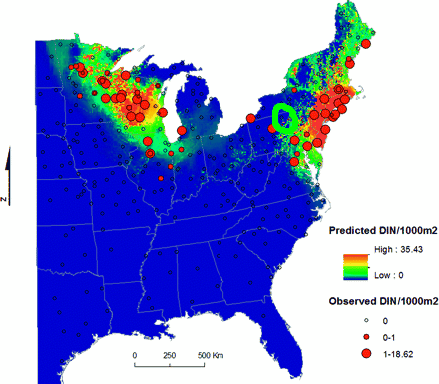
- As you can see in my circle. Bradford/Sullivan Counties are considered a hotspot! As well as all of PA from Wayne County to Chester County.
Areas in the United States where people have the highest risk of contracting Lyme disease are pinpointed in a new map created by the U.S. Centers for Disease Control and Prevention. Lyme disease is one of the most rapidly emerging infectious diseases in North America. It’s transferred by ticks and symptoms range from headaches, fever and a rash to arthritis and Bell’s palsy, or damage to a facial nerve that can lead to temporary paralysis of the muscles on one side of the face.
At least three closely related bacteria cause the disease. It is transmitted by the bite of deer tick and is usually easy to treat with antibiotics if discovered early, but as time goes by treatment gets harder as the organism settles in and begins to damage various organs. Even us DFP’ers get ticks. I had one embed itself in my arm while fishing on the Oswayo Creek near Shinglehouse, PA. I was sitting on a nice manicured lawn along the creek when I got the tick. It wasn’t in a classic tall grassy area. So be on the lookout!
The incidence of the disease is reduced by careful examination of clothing and skin after (and while) outdoors, knowledge of the first symptoms, and reduction in deer ticks. Outdoor activities such as flyfishing, hiking and of course, hunting will put more folks into areas that could lead to a tick bite. The best way to combat getting a tick bite to to wear waders or long pants and to wear shirts with long sleeves. Staying out of tall grassy areas with exposed skin helps. But what’s a dirtbagger to do when we are fishing along weedy growth areas? Wear some ”bug juice” that has Permethrin in it.
Permethrin forms a bond with fabric and will last through several to many laundry cycles. It is a toxin but in this case it is bound to the fabric, and therefore cannot harm you. This is what all of our Armed Forces use on their uniforms. The warnings should not be dismissed but are there mainly to avoid lawsuits, e.g., kind of like warning labels on hammers.
Thursday, April 26, 2012
Fracking with Propane

The Gas Companies’ Latest Tactic to Bring Fracking to New York State
A group of landowners in Tioga County in Western New York State have reached an agreement with gas drillers’ eCorp and GasFrac Energy Services to open up 130,000 acres to gas drilling and to use liquid propane gas (LPG) as a fracking agent. The coalition’s strategy appears to be to bypass the current de facto moratorium on high-volume hydraulic fracturing through the use of this alternative fracking agent.
Our lawyers have advised us that New York law does not permit fracking with LPG because given its significant risk of adverse environmental impacts any application to use it would first require its own supplemental-generic or site-specific environmental impact statement. It is unfathomable that the state would consider allowing a process that forces explosive liquid propane gas underground under high pressure without first doing the proper environmental review.
What we do know is that this dangerous new technology resulted in two explosions/fires in 2011 - one left 3 workers hospitalized and one worker with second degree burns and the second, a flash fire, injured about a dozen workers, two of whom had to be evacuated to the hospital by helicopter. In a third incident, GasFrac Energy Services of Alberta Canada, the company who pioneered this technology, had to shut down the company for 2 weeks in January 2012 while they investigated a fire at a well site.
GasFrac has touted fracking with liquid propane as a major breakthrough because it eliminates the need for the millions of gallons of water that are needed to frack each well, however, it is not at all clear that fracking with liquid propane gas is any less threatening to the environment or to people’s health than water based fracking. There has been no independent empirical analysis or scientific studies done of the complete life cycle of the process and the only information about it comes from the company’s marketing materials, which claim, for instance, that it is a “green” alternative to water based approaches.
Also, the elimination of water does not eliminate the need to truck this highly explosive gas to the well sites, the need for chemicals in the fracking solution or the threat of air pollution. It doesn’t solve the problem of methane leaks and its highly combustible composition brings with it new levels of danger for both workers and residents. For more on the dangers of propane fracking, please see our website.
The bottom line is that fracking with liquid propane gas should not be allowed in New York State.

Join us in writing to your legislators and Governor Cuomo demanding that this process be banned.
We often ask you to write to our government officials, and some of you may feel that you have already expressed your objections to fracking, however, it is critical in this fight that we keep up the pressure and that our elected officials hear from us again, and again about why fracking is too great a risk to our health and the well-being of our communities to be done in New York State.
And please mention that you don’t want propane fracking in New York when you call Governor Cuomo as part of our “DON’T FRACK FRIDAYS” call campaign. His office can be reached at (518) 474-8390.
Thank you for your past actions and thank you for staying in this fight.
Thursday, April 19, 2012
Increase Your Fishing Skills with DEC's Freshwater Fishing Tips
Want to know all the nooks and crannies where a fish may be hiding? Visit DEC's new webpages,Where to Fish: Rivers and Streams and Where to Fish: Lakes and Ponds to find information on the best locations to drop your line and reel in a fish from a flowing stream or calm lake. You can learn other techniques and tips for a better fishing experience by visiting DEC's Fishing Skills webpage.
Tuesday, April 3, 2012
Good afternoon Upstate Fly Fishers members and friends
April tyer: Our guest tyer this month will be John Dwyer. He will be tying a Dorato Caddis. He will begin at 7:00
Program: JP Ross of JP Ross Fly Rods in Utica will be doing a presentation on his Trout Power program. J.P. is promoting West Canada Creek, it's trout and the surrounding area and businesses.
NOTE: JP will be starting his presentation at 7:30. BRING A FRIEND! Let's get a nice turnout for JP.
Where: We meet at the Pittsford Rec Center (Spiegel Community Center), 35 Lincoln Ave, Pittsford. Meeting starts at 7 PM with a fly tying demo.
Links for JPRoss, Trout Power and the tournament (PDF file attached):
J.P. Ross website: http://www.jprossflyrods.com/
What is Trout Power about: http://troutpower.blogs pot.com/2011/11/what-is-trout-power-all-about.html
Trout Power Tournament: http://www.troutpower.blogspot.com/p/2012-tournament.html
Thursday, March 29, 2012
Gardner Grant, longtime lover of fly fishing, died
Re: Gardner Grant, longtime lover of fly fishing, died
Thu Mar 29, 2012 1:21 pm
Here is the Angler's Club obit. He was one of the really good guys. Did great work with and for AMFF.
Gardner L. Grant of Purchase, NY and Jupiter, FL, a long-time member of the
Club, passed away on March 28, 2012, after a long battle with cancer. He
was 85 years old. Born in Boston, MA, Gardner spent his early years in
Providence RI. He was a graduate of Yale College and Harvard Business
School, and led a family-owned company in the invention and development of
equipment for the automatic collection of tolls on tunnels, bridges and
turnpikes. Following the sale of the company to a publicly held
corporation, he moved his family to Scarsdale, NY and continued to serve as
president for over a decade. Later, Gardner became active in real estate
development and management. A life-long, passionate fly fisherman, Gardner
was active in numerous environmental and angling related organizations. He
served as president of New York’s Theodore Gordon Fly Fishers, the
Federation of Fly Fishers and the American Museum of Fly Fishing; and a
board member of Trout Unlimited, the Atlantic Salmon Federation, the Hudson
River Foundation for Science and Environmental Research and Yale’s Peabody
Museum of Natural History.
Gardner is survived by his wife of over 60 years, Ellen, his daughter
Laurie Zimmerman, son Gardner L. Grant, Jr, son-in-law Dr. Franklin
Zimmerman, daughter-in-law Sulu Hegde Grant, and grandchildren Stacey,
Ricky, Sean and Shakira.
The family requests that any donations in Gardner’s memory be made to the
American Museum of Fly Fishing in Manchester, VT.
--
The Anglers' Club of New York
101 Broad Street
New York, New York 10004
212.425.7333
Monday, March 26, 2012
Don’t Let the Governor Get Away with Taking the Fracking Health Impact Assessment Study Out of the State Budget
Last night New York State released a final draft of the section of the budget that should have included a Health Impact Assessment Study on fracking, but despite the study’s inclusion in the budget submitted by the Assembly, it was absent from the final version.
This flagrant omission prompts us to ask the question, “Does the Governor really care about our health?”
These actions are particularly egregious in light of the medical evidence that is coming out warning about the dangers of fracking. Just last week researchers at the Colorado School of Public Health reported the results of a 3-year study that shows that air pollution caused by fracking may contribute to acute and chronic health problems for those living near natural gas drilling sites.
Researchers found a number of potentially toxic petroleum hydrocarbons in the air near gas wells including benzene, ethylbenzene, toluene and xylene. The report calculated higher cancer risks for residents living nearer to wells as compared to those residing further away. Benzene has been identified by the Environmental Protection Agency as a known carcinogen.
Lisa McKenzie, Ph.D., MPH, the lead author of the study and a research associate at the Colorado School of Public Health said, "Our data shows that it is important to include air pollution in the national dialogue on natural gas development that has focused largely on water exposures to hydraulic fracturing." She cited the need for additional studies to also examine the toxicity of other hydrocarbons associated with natural gas development.
Catskill Mountainkeeper and our coalition partners have organized a call-in day on Wednesday, March 28th to tell the Governor that he needs to do his job to protect our health and the health of our communities.
Please call, have the members of your family, your friends and colleagues call and tell Governor Cuomo to reinstate the Health Impact Assessment Study of Gas Drilling into the State budget and call for a statewide BAN on fracking.
On Wednesday, please call 866-584-6799.
Sunday, March 25, 2012
WNRCD (www.vacd.org/winooski) is pleased to announce a Spring Trout Sale
For the first time in many years, WNRCD (www.vacd.org/winooski) is pleased to announce a Spring Trout Sale! We are happy to provide landowners with the opportunity to purchase brook and rainbow trout directly through the District. And, because we order in bulk, we can provide these fish at very low cost.
This year’s sale will be on Sunday, May 6 from 1:00 pm to 3:00 pm at Rusty Parker Memorial Park in Waterbury, Vermont. Pre-orders will be accepted until Friday, April 20.
Orders of 6-8” trout must be picked up on Sunday, May 6, 2012 between 1:00 p.m. and 3:00 p.m. at Rusty Memorial Park in Waterbury. Trout will come pre-bagged with oxygen. If you do not pickup your order by 3:00 p.m. on the above date, the District reserves the right to sell or relocate your order, unless arrangements have been made with the District. No refunds will be issued for damaged of relocated fish.
Orders of 10-12” trout will be delivered by the trout farm any time on May 5 and May 6. Please provide very detailed, written directions to your pond with your order form and payment. Include in directions: your name, town, mileage from turn-offs and intersections, road names, landmarks, and description of property. Complications on the day of delivery due to poor directions or impassable road conditions will result in a forfeiture of your order. Your order will not be refunded because the fish cannot be returned to the hatchery.
Trout Sale
Please help spread the word!!!!
Lisa Coven
WNRCD
Project Manager
802-865-7895 x104
www.vacd.org/winooski
Office Hours: Tuesday, Thursday, and Fridays 8am -4pm
or by appointment
Friday, March 23, 2012
-- Recreational Sporting Season Reminders --
-- Recreational Sporting Season Reminders -- |
Upcoming Seasons |
| The reminders listed below include open and final recreational season dates for the weeks of March 23 through April 9. For all season dates and to view more information about hunting, trapping and fishing in New York State, visit DEC's Outdoor Activities(http://www.dec.ny.gov/62.html) webpage. |
Fishing(http://www.dec.ny.gov/outdoor/fishing.html) |
| · April 1 - Trout, lake trout and landlocked Atlantic salmon season opens. · April 1 - Winter flounder season opens. |
Migratory Bird Hunting(http://www.dec.ny.gov/outdoor/28175.html) |
| · March 31 - Final day for crow (http://www.dec.ny.gov/outdoor/65847.html) hunting statewide |
Trapping(http://www.dec.ny.gov/outdoor/355.html) |
| · April 7 - Final day for the following: o Beaver (http://www.dec.ny.gov/outdoor/29044.html) trapping in northern and eastern areas of New York State o Mink and muskrat (http://www.dec.ny.gov/outdoor/30510.html) in eastern areas of New York State o River otter (http://www.dec.ny.gov/outdoor/30513.html) in northern areas of New York State |
Furbearer Hunting (http://www.dec.ny.gov/outdoor/45559.html) |
| · March 25 - Final day for coyote (http://www.dec.ny.gov/outdoor/28945.html) hunting statewide |
Join Fracking Fridays!
|
This Friday, March 23, call Governor Cuomo– (518) 474-8390 – and tell him you support an independent health impact assessment on fracking in New York. DEC chose not to do a health analysis for its fracking proposal, despite the growing body of evidence from across the country that people are getting sick from living near fracking operations. To fill this gap, the NYS Assembly has proposed mandating and funding an independent health impact assessment on fracking in the NY State Budget for 2013. Please call the Governor at 518-474-8390 today and leave the following message: My name is ______ and I live in _____. I am concerned that no one has evaluated how fracking will affect the health of NYS residents, and strongly support the state mandating and funding an independent health impact assessment on fracking in the NY State Budget. Background: The Assembly’s action was in response to numerous warnings from the medical community that this analysis is needed. In October 2011, 250 physicians and medical professionals wrote a letter to Governor Cuomo calling for a comprehensive public health impact assessment. In December 2011, Dr. Sandra Steingraber, Lois Gibbs and Fran Drescher echoed that call with nineteen NY-based cancer advocacy groups in a letter addressed to Governor Cuomo asking for the same assessment . Most recently, Christopher Portier, the Director of the National Center for Environmental Health at the federal Centers for Disease Control and Prevention in Atlanta, Georgia stated, "More research is needed for us to understand public health impacts from natural gas drilling and new gas drilling technologies." Please call the Governor today!
|
Thursday, March 22, 2012
Black bears are on the move
Posted by Leo Roth • March 21, 2012 •
A black bear that was part of radio-collar study conducted by the DEC.
Trout aren’t the only wildlife on the run with the onset of our spring – make that summer – like weather. Black bears are emerging from their winter slumber and are on the move in Western New York in search of food and in the case of young males, new territory to inhabit. It is illegal in New York to feed bears and the DEC issues consistent guidelines about limiting bear-human encounters. If you see a bear, observe from afar. Remember the adage: “A fed bear is a dead bear.” That’s because invariably officials will be called to remove a nuisance bear by whatever means necessary.
Here’s a news release issued today:
NY Big Game,
With the onset of warmer weather, New York’s black bear population will be on the move. The New York State Department of Environmental Conservation (DEC) today issued guidance on how to prevent nuisance bear encounters.
Black bears will take advantage of almost any readily available food source, including bird feeders and garbage. To prevent encounters between bears and humans, people should never intentionally feed bears and should take every precaution to discourage bears from seeking out food sources in neighborhoods and other residential areas.
Typically, black bears are timid and will avoid all contact with humans. However, bears will become a nuisance and can cause significant damage if they believe they can obtain an easy meal from bird feeders, garbage cans, dumpsters, barbeque grills, tents, vehicles, out-buildings or houses.
It is not only illegal to intentionally feed bears, it is also illegal to inadvertently feed them. Specifically, after written notice from DEC, the incidental or indirect feeding of bears through food attractants such as garbage, pet food or bird seed is illegal. DEC has the authority to require the removal of these and other food attractants when bears become problematic.
It is in the best interest of both bears and people for bears to get their food solely from wild sources. Once a bear learns to associate certain structures with food, it can become a serious nuisance to people and a threat to itself. Bears that lose their natural fear of humans are much more likely to be illegally shot, hit by an automobile or destroyed under a DEC nuisance permit. Some studies suggest that when a bear is fed (either directly or indirectly), its life expectancy is cut by as much as 50 percent.
Once a bear becomes a problem, DEC is often asked to relocate the bear. Contrary to popular belief, bear relocations are rarely effective at solving the problem. Bears are extremely mobile and have excellent homing abilities. Relocated bears often return to their original capture site or may continue their bad habits at a new location. If the circumstances that led to the original problem are not corrected, other bears will quickly be attracted to the site and the bear/human conflicts will persist.
In addition to being ineffective, bear relocations are extremely time consuming and often dangerous. The heavy door on the bear traps, although not dangerous to bears, presents a potential danger to curious humans and pets. The simplest way to avoid a nuisance encounter is to remove all food sources. Removing the food source will remove the bear.
READ MORE : http://blogs.democratandchronicle.com/outdoors/2012/03/21/black-bears-are-on-the-move/?source=nletter-news
Friday, March 16, 2012
Get the Sleepy Hollow GM Cleanup Right—the First Time
|
|
|
|
| General Motors manufactured cars in Sleepy Hollow for 82 years, and it could leave much of the contamination that resulted from its operations in the ground and in the Hudson River, if a proposed Department of Environmental Conservation plan stands. The public has its best opportunity to demand a DEC Brownfield Cleanup plan worthy of the Hudson River and this community at an upcoming public hearing: When: Thursday March 22 at 7 p.m. The GM site, which was occupied by a brick yard and other industries before GM’s tenure began in 1913, is nearly 100 acres of filled land that once was Pocantico Bay, a part of the Hudson River. Pollution, including toxic heavy metals, solvents and petroleum, now permeates the soil, soil vapor, groundwater and river sediments. The DEC proposal to cap contaminated sediments and dredge a small area of river bottom would leave most of this contamination in place, and would neither prepare the site for redevelopment nor reclaim lost habitats in the Hudson River. Riverkeeper encourages the public to attend the public hearing and express its concerns, including the need to:
To learn more, read the DEC’s plan for the GM site, and Riverkeeper’s background on the site. |
Saturday, March 10, 2012
From the Pamphlet "Notes to Fly Fishermen about Leaders"
From our friends at ORVIS
7-1/2-foot Tapered Trout Leaders
9-foot Tapered Trout Leaders
12-foot Tapered Trout Leaders
9-foot Light-Butt Tapered Trout Leaders, for 3- & 4-weight lines
12-foot Light-Butt Tapered Trout Leaders, for 3- & 4-weight lines
Friday, March 9, 2012
-- Recreational Sporting Season Reminders --
| | |
Upcoming Seasons | |
| The reminders listed below include open and final recreational season dates for the weeks of March 9 through March 23. For all season dates and to view more information about hunting and fishing in New York State, visit DEC's Outdoor Activities(http://www.dec.ny.gov/62.html) webpage. | |
Fishing(http://www.dec.ny.gov/outdoor/fishing.html) | |
| · March 15 - Final day for northern pike, pickerel, tiger muskellunge and walleye fishing statewide, unless exceptions apply. Exceptions are listed by water body and county on DEC's Freshwater Fishing Regulations (http://www.dec.ny.gov/outdoor/7917.html) web page. · March 16 through November 30 - Open season for striped bass in the Hudson River. This includes all waters and tributaries of the Hudson River north of the George Washington Bridge. The minimum size limit is 18 inches, and the daily possession limit is 1. Fishing for striped bass in marine and coastal waters south of the George Washington Bridge will open on April 15. | |
Waterfowl Hunting(http://www.dec.ny.gov/outdoor/28503.html) | |
| For Snow Goose: · March 1 through April 15 - Open season in the Southeastern Zone (http://www.dec.ny.gov/outdoor/28497.html) · March 9 - Final day in the Long Island Zone (http://www.dec.ny.gov/outdoor/28497.html) · March 11 through April 15 - Open Special Snow Goose Season (http://www.dec.ny.gov/outdoor/50514.html) in several waterfowl hunting zones | |
| For Canada Goose: · March 10 - Final day for both Western Long Island and South Canada Goose Hunting Area (http://www.dec.ny.gov/outdoor/28496.html) | |
Trapping(http://www.dec.ny.gov/outdoor/355.html) | |
| · March 15 - Final day for beaver (http://www.dec.ny.gov/outdoor/29044.html) trapping in remaining open areas of western New York State | |
Small Game Hunting (http://www.dec.ny.gov/outdoor/27801.html) | |
| · March 18 - Final day for varying hare (http://www.dec.ny.gov/outdoor/29451.html) and cottontail rabbit (http://www.dec.ny.gov/outdoor/29449.html) hunting in remaining open areas of New York State |
Thursday, March 8, 2012
WE NEED YOU TO CALL NEW YORK STATE ASSEMBLY SPEAKER SHELDON SILVER TODAY. HERE IS WHY.

Negative impacts on human health have accompanied gas drilling using hydrofracking wherever it has been done. Despite that, the permit conditions proposed by the New York State Department of Environmental Conservation (DEC) to “govern” fracking makes little mention of the health impacts of fracking.
That is why Catskill Mountainkeeper and our coalition partners are demanding that the legislature require that an independent comprehensive Health Impact Assessment (HIA) be done prior to any further discussions of shale gas.
In October 2011, 250 physicians and medical professionals wrote a letter to Governor Cuomo calling for a comprehensive public health impact assessment. This was sent because the concerns outlined in a previous letter sent to The department of health and the Governor were clearly ignored in the draft Supplemental generic environmental Impact statement (SGEIS) .
A health impact assessment, which is defined by the National Research Council of the National Academy of Sciences, "INCLUDES MANY TOOLS THAT HELP ENSURE THE VALIDITY OF THE FINDINGS AND HAVE MULTIPLE PLACES FOR PUBLIC INPUT TO THE DOCUMENT."
This will tell New Yorkers what the “true” costs of gas drilling are.
Certainly the risk to the human and animal health in New York State justifies that such a health Impact assessment be done.
On Tuesday our allies in the Assembly worked to have this attached to the budget as a resolution.
Now the industry is pushing hard to have it removed.
The Cuomo administration keeps calling for science not emotion. This is the science. Call Assemblyman Sheldon Silver today!
Thank him and ask him to continue the fight to keep a Health Impact Assessment in the Budget. It is very important that he hears from you now.
New York State Assembly Speaker Sheldon Silver Contact Information:
District Office
250 Broadway
Suite 2307
New York, NY 10007
212-312-1420
Albany Office
LOB 932
Albany, NY 12248
518-455-3791
Speak Out Now to Protect the Hudson River
|
| ||||
|
Wednesday, March 7, 2012
Three Tips for a Better Backcast
|
If you're looking to improve your cast, start by perfecting your backcast. Here are three tips that will help you accomplish a better backcast and therefore, a better cast in general. 1. Start with the rod tip pointed down at the water. This allows the rod to move through a more complete motion, which provides it with more kinetic energy. Conversely, if you start the rod parallel with the water, you have decreased the backcast stroke dramatically, resulting in a decrease of potential kinetic energy, as well. 2. Stop your backcast with the tip of the rod pointed straight upward. This is most important, since it allows the stored kinetic energy in the rod to flex the rod, which is the whole idea behind the casting stroke. Be careful to not break your wrist. And don't over-think this one. It's simple. Stop the backcast with the rod tip pointed straight up, or at your ear, or next to your temple, or whatever works for you to that end. But straight up is the key. 3. Watch your backcast straighten out off the tip of the rod. This allows the rod to fully load for the forward cast and lets the line to achieve its proper speed relative to the energy in the rod. By keeping these three tips in mind, your backcast will improve greatly and as a result, so will your forward cast. Tim Linehan is the owner of Linehan Outfitting Co. on the Kootenai River in Troy, Montana. Share this with your friends: |
Friday, March 2, 2012
New Legislation Addresses Major Threats to Recreational Fishing
Take action today to protect recreational fishing’s conservation heritage
On February 27, Rep. Jeff Miller (R-FL) introduced the Sportsmen’s Heritage Act of 2012 (H.R. 4089) with the support of Congressional Sportsmen’s Caucus leaders Reps. Dan Benishek (R-MI), Jeff Flake (R-AZ), Don Young (R-AK) and Dan Boren (D-OK). This legislative package addresses two very significant threats to recreational fishing: attempts to ban lead fishing tackle and loss of access to public lands. To learn more, read the bill text.
The Sportsmen’s Heritage Act of 2012 includes language from the Hunting, Fishing and Recreational Shooting Sports Protection Act, which seeks to prevent a federal ban on lead in recreational fishing tackle and will ensure that any future regulations on fishing tackle are established based on scientific fact instead of unjustified, unsubstantiated petitions. In 2010 and 2012, anglers nationwide twice defeated anti-fishing efforts to federally ban lead fishing tackle. Despite these monumental wins for anglers, attempts to overregulate our sport have not ended, as anti-fishing organizations are currently challenging these wins in court, further demonstrating the need for a legislative solution.
Another major threat to recreational fishing that is addressed in the Sportsmen’s Heritage Act of 2012 is lack of access. In fact, it is the primary reason that keeps anglers from enjoying a day on the water. With expanding land development and growing regulations restricting angler access, federally owned lands are more important than ever for recreational fishing opportunity. The Sportsmen’s Heritage Act of 2012 will increase access to angling, hunting and recreational shooting on federal lands by prioritizing these activities within agencies' land management plans.
Take Action
The Sportsmen’s Heritage Act of 2012 will increase public access to our nation’s public lands, prevent an unjustified ban on fishing tackle and also promote the conservation values of hunting and recreational shooting. This legislative package offers tremendous opportunity to the sporting community and it is important that sportsmen and woman speak up in support. Click here to send a message to your Member of Congress today in support off this important bill – you can’t afford not to.
Thursday, March 1, 2012
Natural Gas Drilling - Sportsmen Alliance for Marcellus Conservation
TGF Bulletin
The proliferation of Marcellus Shale development will result in an industrialization of the landscape of portions of upstate New York. In the Catskill Mountains, the Beaverkill, Neversink, Esopus and Delaware Rivers as well as the Willowemoc Creek, are vital trout producing waters, which produce consistently-flowing, cold, clear water year-round to enable its trout populations to thrive. TGF continues to play an active leading role in addressing natural gas development in New York State as a member of The Sportsmen Alliance for Marcellus Conservation (Sportsmen Alliance). The Sportsmen Alliance is a coalition of more than 265,000 sportsmen and women and conservation groups working to reduce the impacts caused by gas drilling in the Marcellus Shale on hunting, fishing, trapping and other outdoor sporting activities.
In January 2012, the Sportsman Alliance, with TGF's participation, submitted written comments for submission to the New York State Department of Environmental Conservation (DEC) regarding the Revised Draft Supplemental Generic Environmental Impact Statement (rDSGEIS) on the Oil, Gas and Solution Mining Regulatory Program: Well Permit Issuance for Horizontal Drilling and High-Volume Hydraulic Fracturing (HVHF) to Develop the Marcellus Shale and Other Low-Permeability Gas Reservoirs, dated September 7, 2011. While the coalition supports responsible energy development, the Sportsmen Alliance is concerned that New York's environmental review and proposed regulations do not adequately protect valuable and irreplaceable natural resources, including clean water and critical habitat for fish and wildlife, from drilling activities. As part of its comments, the Sportsmen Alliance recommends that the DEC prohibit both surface and sub-surface drilling on state-owned lands. In addition, the Sportsmen Alliance strongly urges the DEC to protect areas that have high ecological value, as well as lands that were set aside for recreational and watershed purposes. Toward that end, the Sportsman Alliance recommends that no surface or sub-surface drilling be permitted in the following areas: the New York portion of the Delaware River basin; Catskill park and state lands within close proximity; all state-owned lands identified by the DEC in the rDSGEIS; Allegany State Park; watersheds that been granted filtration Avoidance Determinations by the U.S. Environmental Protection Agency; primary and principal aquifers; and watersheds where wild or native brook trout populations exist and that have high habitat integrity. The Sportsmen Alliance further recommends increasing setbacks from waterways to assure protection of water resources, including around the Finger Lakes and shore of Lake Erie (buffers should consider the slope of shoreline and upland areas and the thickness and attenuation capacity of the soils) and perennial and intermittent streams, ponds, lakes and rivers.
TGF continues to work with several not-for-profit organizations in addressing concerns regarding natural gas development of the Marcellus Shale.
For more information regarding natural gas development of the Marcellus Shale please see the following websites:
The Riverkeeper Top 3 - March 1, 2012
|
|
| Fracking Day of Action courtesy Jessica Riehl |
Don't Frack with NY Towns!
In two separate cases, state judges affirmed towns’ rights to restrict gas drilling within their borders. While these victories are sure to be appealed to higher levels, these two initial wins could prove pivotal, as Gov. Andrew Cuomo and the Department of Environmental Conservation have said they could finalize their fracking proposal this spring, despite the record-setting 60,000 public comments in response to New York’s flawed draft.
· Take Action! With two clicks, you can use Riverkeeper’s online action center to tell your state representatives to Stop the Rush to Frack and to close a loophole that now exempts frackers from treating their hazardous waste like other industries.
· Get Informed: Read about first-ever state rules governing the large-scale withdrawal of water for purposes including fracking, and Riverkeeper’s concerns.
· Donate: Support our Don’t Frack with New York campaign with a donation to Riverkeeper’s Watershed Program.
|
|
Fighting for Safer Swimming
Riverkeeper has documented many instances when water quality fails to meet Environmental Protection Agency standards for safe swimming. That’s why we’re fighting back against an EPA proposal that would lower the bar on water quality standards and public health protection. We are calling for monitoring and reporting that will more accurately represent water quality conditions and support actions to stop sewage pollution. Riverkeeper is also urging Brooklyn and Queens residents to demand that long-term plans for sewage overflows in Newtown Creek set a higher bar for water quality.
· Take Action! Sign our petition in support of a Sewage Right to Know Law.
· Get Informed: Check the water quality data for your location, and read about our efforts to build a volunteer team to test the Hudson’s largest tributary.
· Donate: Ensure testing continues with a gift to Riverkeeper’s Water Quality Program.
|
|
Intervening to Protect Vital Hudson Habitat
Transmission Developers, Inc. (TDI) is seeking permits to build the Champlain Hudson Power Express, a 1,000-megawatt electric transmission line that would deliver power to New York City, in part with a submarine cable in the Hudson River. Together with its partners, Riverkeeper agreed to a settlement, negotiated over 15 months, with TDI that would:
· protect critical Hudson habitats, including between Albany and Catskill, and in Haverstraw Bay (pictured), by removing the cable from a third of the river;
· require testing before and after construction to ensure river life isn’t affected; and,
· create a $117 million fund, administered by a third party, that will pay for habitat studies, restoration and other priority projects identified by New York and environmental groups, including Riverkeeper.
Riverkeeper in the Press
02.24.12 :: DiscoveryNews
Small Town Gets Court to Ban Fracking
The town of Dryden, N.Y., recently won a court ruling saying it could prohibit fracking as part of its zoning ordinance. Environmental groups called the ruling a victory for residents while drilling proponents are unsure the ruling will mean that other towns can put a halt to fracking. Kate Hudson, Riverkeeper’s Watershed Program Director, said, “A number of towns were waiting to see how the litigation gets settled, but nobody thinks it is the end.”
02.22.12 :: Capital
What can Andrew Cuomo actually do about Indian Point?
On the federal level, in 2010 and 2011, Entergy spent around $8.2 million on lobbyists. “They have enormous legal resources at their disposal… their lawyers outnumber us sometimes three to one.” Phillip Musegaas, Riverkeeper’s Hudson River Program Director.
02.22.12 :: The Daily Tarrytown
Concerns Arise About GM Clean-Up in Sleepy Hollow
Phillip Musegaas said Riverkeeper was still reviewing the documents on the proposed remediation, but that it is “very skeptical” that capping over the site will prevent further contamination, because the polluted soil will still interact with groundwater and will continue "leaching contaminants into the Hudson River."
Wednesday, February 29, 2012
National Invasive Species Awareness Week
This newsletter is being sent during National Invasive Species Awareness Week (NISAW) February 27 - March 3, 2012. The week features a full slate of events in Washington, D.C., as well as a host of associated events and activities in all areas of the country. First begun in 2009, NISAW is a great way to get out the message about invasives. Visit the NISAW Site
On Thursday March, 1 from 1:00 - 3:00 (Eastern time) anyone interested is invited to listen to a webcast of the Grassroots Partnership session taking place in Washington, DC. This is an audio only broadcast that you listen to on the Web. Learn More
There are a number of associated activities taking place as part of NISAW. Several of our great Clean Angling partners have efforts that compliment the national activities.
The Fishing Outfitters Association of Montanan (FOAM) is undertaking several efforts to get their professional guide and outfitter members to better teach their clients about cleaning Read More
Recycled Fish has kicked off the week at the Bassmaster Classic where they have unveiled the new What-A-Mussel game. Read More
Trout Unlimited has been conducting a national survey about anglers and invasives. During NISAW they expect to release the results of this biggest ever attempt to better understand how anglers relate to invasives. In addition, TU will be providing special training to their volunteer leadership. Read More
Patagonia is highlighting a number of outreach initiatives including their new web content and product hang tags. Unfortunately the Patagonia program has not yet been posted to the NISAW website so we can't supply a link. Visit the NISAW link above to find it when posted.
US Senator Takes the Pledge!
Montana senator Jon Tester has joined the ranks of those who pledge to take personally responsibility for reducing the spread of invasives. On February 28, Senator Tester announced that he had taken the Clean Angling Pledge. As part of his remarks Testor said “This pledge is an important step to stop the spread of invasive species so that we can pass down our outdoor heritage to our kids and grandkids.” Read More
Felt Bans in the News
In the January 2012 Issue of the Clean Angling News we reported about the new felt ban being implemented in Rhode Island. The ban was for all waters, fresh and salt. However, the ban has been modified and now only applies to fresh water. Read More
Felt bans are one of the hottest topics among anglers and we continue to provide a comprehensive accounting of all felt ban proposals in the US at US Felt Bans
Clean Angling Ambassadors Announced
The Clean Angling Coalition has just launched a new program that is sure to attract attention form a lot of anglers. The Clean Angling Ambassador program is an effort to get many of our best known anglers to become active advocates for clean angling. The Ambassadors are all role models for many others and by including a simple cleaning message every time they advocate for fishing they use their influence to educate everyone about the need to be clean.
The list of Ambassadors contains some very well known anglers and Program Director Leah Elwell tells us to watch for many new additions to the list coming soon. Read More
Too Far?
Any time we do anything we can expect that there will be critics. In the past month a couple of stories out of Minnesota feature those who ask if the AIS fight is going too far.
Glenn Schmitt is an outdoor columnist who questions a new program that will require all boat owners to take and pass an online test Read More
At the same time, Representative Steve Drazkowski, R-Mazeppa, questions the AIS program saying "The approach is one that creates more government and takes away individual liberties to operate boats on waters," Drazkowski said. "It's full of enforcement and it's full of sanctions to boat owners in order to apparently accomplish the objectives." Read More
Saturday, February 25, 2012
Comment on Proposed Changes to Freshwater Sportfishing Regulations NY State
Every two years, DEC proposes changes to freshwater fishing regulations to enhance fishing opportunities and to protect the state's freshwater fisheries. DEC will accept public comments on the proposals through April 2. A summary of the proposals is available on DEC's Freshwater Fishing (http://www.dec.ny.gov/outdoor/fishing.html) webpage. The full text of the draft regulation and instructions for submitting comments can also be found on DEC's Proposed Regulations (http://www.dec.ny.gov/regulations/propregulations.html) webpage. Comments on the proposals can be e-mailed to fishregs@gw.dec.state.ny.us, or mailed to Shaun Keeler, NYSDEC, Bureau of Fisheries, 625 Broadway, Albany, NY 12233-4753. Following a full review of public comments, final regulations will take effect October 1.
Thursday, February 16, 2012
Lyme disease map pinpoints high-risk areas: Do you live in one?
- By
- CBS News Staff
 (Credit: flickr/jkirkhart35)
(Credit: flickr/jkirkhart35)
(CBS/AP) Lyme disease season is around the corner - which areas of the country face the greatest risk in 2012?
PICTURES: Lyme disease lies - and truths
Yale researchers have an answer. They've spent three years analyzing Lyme disease risk by dragging sheets of fabric through the woods to collect ticks, and have created a detailed map that shows where disease risk is highest (pictured below). The researchers hope their map can help improve prevention, diagnosis, and treatment of Lyme disease.
The map is part of a study published in the Feb. issue of the American Journal of Tropical Medicine and Hygiene. Though the areas highlighted as high-risk likely won't surprise anyone familiar with Lyme, the research also showed where the disease is likely spreading, and it turned up some surprising information about the rate at which ticks are infected with the bacteria that causes it, researchers said.
The map shows a clear risk of Lyme across the Northeast, from Maine to northern Virginia. Researchers also identified a high-risk region in the upper Midwest, including most of Wisconsin, northern Minnesota and a small portion of northern Illinois. "Emerging risk" regions include the Illinois-Indiana border, the New York-Vermont border, southwestern Michigan and eastern North Dakota.
"The key value is identifying areas where the risk for Lyme disease is the highest, so that should alert the public and the clinicians and the public health agencies in terms of taking more precautions and potential interventions," said study author, Dr. Maria Diuk-Wasser of the Yale School of Public Health. "In areas that are low risk, a case of Lyme disease is not impossible but it's highly unlikely, so the clinician should be considering other diagnoses."
The map is based on data collected between 2004 and 2007. Diuk-Wasser said the high risk areas likely haven't changed, but there might be some changes in the transitional areas. The map is still useful, however, because it highlights areas where tick surveillance should be increased and because it can serve as a baseline for future research, she said.
Named after a small Connecticut town, Lyme disease is caused by Borrelia burgdorferi bacteria, which spreads to humans through bites from infected ticks. Symptoms include a bull's-eye rash, fever, headache, and fatigue. Antibiotics easily cure most people of Lyme, but people who aren't treated can develop serious complications like arthritis, meningitis, facial paralysis, and an irregular heart rhythm, according to the CDC.
Previous risk maps were heavily reliant on reports of human infections, but those can be misleading, according to the study, because the disease is both over- and under-diagnosed. Where someone is diagnosed is not necessarily where the disease was contracted, and ticks may live in a region long before they actually infect someone, meaning there could be a significant risk even without confirmed cases.
The study also provided new information about the infection rate among ticks, according to Diuk-Wasser. About 1 in 5 ticks collected were infected - more than researchers expected - and that percentage was fairly constant across geographic areas, she said.
The CDC counted more than 30,000 confirmed or probable cases of Lyme in 2010, the latest data available. More than 90 percent of those cases were in 12 states: Connecticut, Delaware, Maine, Maryland, Massachusetts, Minnesota, New Jersey, New Hampshire, New York, Pennsylvania, Virginia and Wisconsin.

This map released by the Yale School of Public Health indicates areas of the eastern U.S. where people have the highest risk of contracting Lyme disease based on data from 2004-2007.
(Credit: AP)
Thursday, January 26, 2012
FFF meeting Announcement
Our next meeting will be Wednesday, February 1st. We will meet at the Pittsford Rec Center (Spiegel Community Center), 35 Lincoln Ave, Pittsford. Meeting starts at 7 PM with a fly tying demo by one of our members. Business meeting is from 7:30 to 8:30.
After our business meeting, Craig Dennison will be giving a slide presentation on fishing the four seasons in the Rochester and western New York area. Looking forward to this as Craig always gives an excellent presentation.
Saturday, January 21, 2012
What is My Daily Fishing Log?
This free program is really neat, you can send a trip report to your buddy and any one else that you want to see how you did. I would strongly suggest that you try this out and remember it is FREE.
Go here to sign up
mydailyfishinglog.com

My Daily Fishing Log is a free, private, password-protected fly fishing journal. It is written for fly fishermen who keep a journal of their fishing trips and need a more organized way of recording streamside memories and analyzing their success. We believe the key to improving your fishing skills is by recording and analyzing various changing conditions on the river. Our detailed journal, report and analytical features will help you become a better fisherman.
What is My Daily Fishing Log?
This free program is really neat, you can send a trip report to your buddy and any one else that you want to see how you did. I would strongly suggest that you try this out and remember it is FREE.

My Daily Fishing Log is a free, private, password-protected fly fishing journal. It is written for fly fishermen who keep a journal of their fishing trips and need a more organized way of recording streamside memories and analyzing their success. We believe the key to improving your fishing skills is by recording and analyzing various changing conditions on the river. Our detailed journal, report and analytical features will help you become a better fisherman.
Friday, January 20, 2012
RIVERKEEPER NY’s clean water advocate
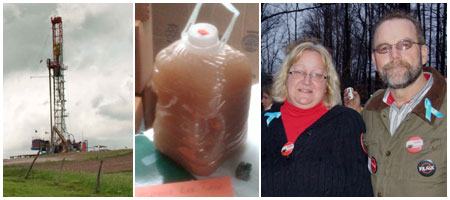
Dimock, PA residents, whose wells were contaminated by Cabot Oil & Gas’s fracking operations, will receive some relief today when the U.S. Environmental Protection Agency (EPA) delivers clean water to four of the eleven families that have been victims of irresponsible fracking. These families have gone without a reliable source of water since November 30, when the Pennsylvania Department of Environmental Protection (PA DEP) allowed Cabot to stop its weekly shipments of fresh water. Since then, Riverkeeper has featured a counter on our website documenting the months, days, hours, and seconds PA DEP and Cabot have denied families the basic human right of clean water (a count we will continue until these families have a long-term solution).
EPA is still collecting data in Dimock, and we hope that EPA will decide soon to deliver water to all of the affected residents.
The victory today in Dimock reminds us of why it is so important for New York not to rush to permit fracking. Even though the comment period on New York’s fracking proposal is over, you can still take action.
Call Governor Cuomo today - (518) 474-8390 - and tell him that you don’t want what has happened in Dimock to happen here.
Then, commit to calling him every Friday to tell him you don’t want anyone to frack with your New York water.
Keep the Momentum Going and Join the Chorus of New Yorkers Speaking Out Against Fracking on Monday, January 23rd

The day will start with a rally in the Legislative Office Building and will be followed by legislative visits. Come join us on this exciting day to bring your voice to Albany and express your concerns about hydro-fracking.
To register for legislative visits, click here.
The rally begins at 11:00am in the "Well" of the Legislative Office Building in Albany.
Catskill Mountainkeeper is sponsoring a bus from Liberty, NY that will stop in Kingston, NY to pick up passengers.
The bus will leave at 7:30am from the Liberty municipal parking lot (across the street from the Elk's Lodge). The bus will be stopping in Kingston at approx. 8:30am (right off I87 - details to follow) to pick up passengers as well. The cost is $15 per person.
Sign up for the CMK bus HERE.
You must register separately for buses and lobby visits.
There are buses going to Albany from other areas as well, please contact the appropriate person from the list below:
· Long Island – Tara Bono – 516-390-7150 – tbono@citizenscampaign.org
· Syracuse/CNY – Lauren Petrie – 315-472-1339 – lpetrie@citizenscampaign.org
· Ithaca – Sara Hess – sarahess63@yahoo.com or Irene Weiser – irene32340@gmail.com
· Buffao/Rochester – Anna Sears – asears@rochester.rr.com or Nedra Harvey – nharv@frontier.com
· Horseheads/Binghamton/Sidney/Oneonta - Susan Multer – 607-739-9141 – gsmulter@stny.rr.com
· NYC – David Braun – Register for NYC Bus
Wednesday, January 4, 2012
FFF - North Eastern Council - Hydro Fracking Concerns
Hydro Fracking Petition!

The Federation and the North Eastern Council is committed to protecting our environment for all to use, the way it was intended for generations to come. We are concerned with the hydro fracking being proposed in the Marcellus Shale areas of New York State and the possible effect that we will be forced to endure for generations.
Please read and consider signing Walter Hang's, Toxic Targeting (anti gas drilling) petition. This is your way to tell governor Cuomo, that the DEC's Marcellus Shale Revised Draft Supplemental Generic Environmental Impact Statement (RD SGEIS), is hopelessly flawed.
It's a powerful letter and a worthy petition.
Tom's Top Ten Tips for Stocking your Nymphing Box
Posted: 03 Jan 2012 10:16 AM PST
We posted a show a few weeks ago on how to stock your dry-fly box. We had a lot of requests for the same for nymphs. What do you think of Tom's list? Did we miss any?
Click the play button below to listen to this episode. Go to orvis.com/podcast to subscribe to future episodes
If you cannot see the podcast player, please click this link to listen.
Share this podcast with your friends:

